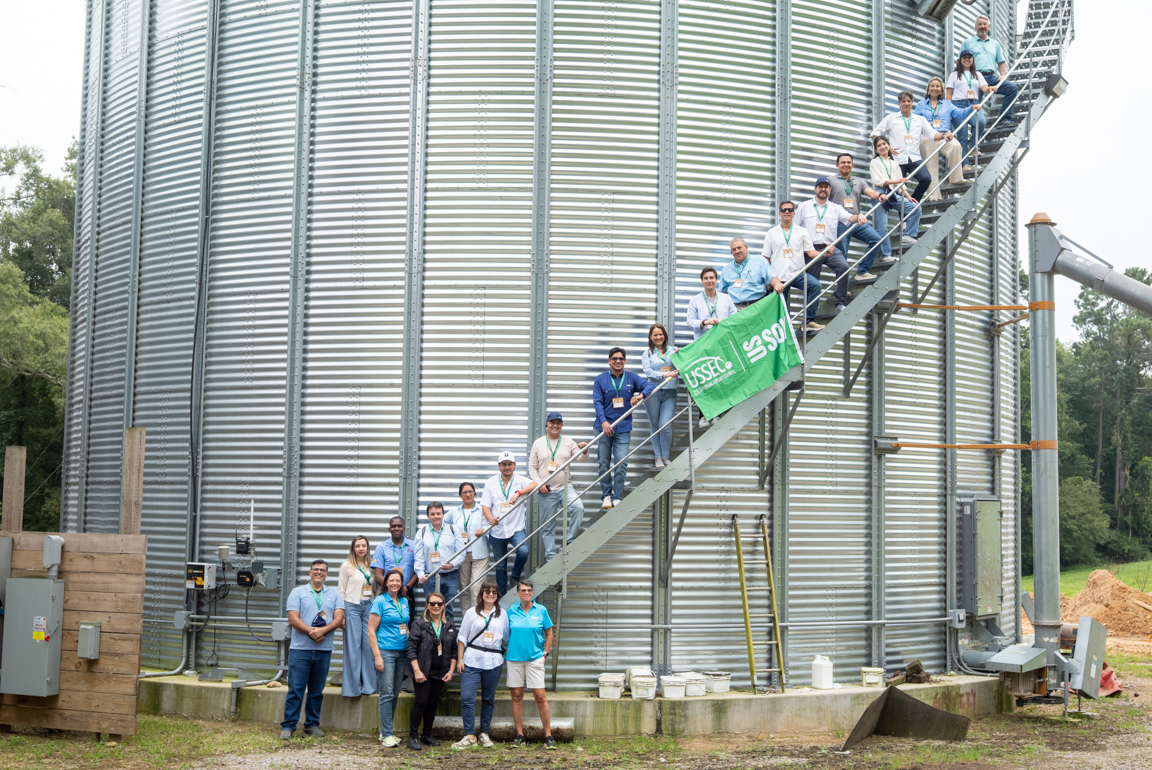Missouri Soy Brings High Oleic Variety to Commercialization

Tough challenges are no stranger to soybean farmers. From field-specific pests to tariffs with industry-wide implications, farmers find ways to overcome obstacles and come out stronger in the long run.
Earlier this year, farmers again faced one of those challenges. The Food and Drug Administration’s ban on partially hydrogenated oils went into effect in June. The ban was a major blow to commodity soybean oil, which requires partial hydrogenation for stability, in commercial frying and baking.
Soybean farmers have no intention of letting the food oil market slip away. Soy farmer-leaders continually invest in innovation and future opportunities to counteract threats to demand. To battle anticipated and potential hits in the commodity soybean food-oil markets, farmers invested checkoff dollars in initiatives such as biodiesel, industrial uses and high oleic soybean oil.
High oleic soybeans produce a naturally stable cooking oil, so the product does not require partial hydrogenation. On top of that, the oil boasts enhanced cooking properties such as high heat performance.
Among other high oleic investments, USB supported a joint project between the University of Missouri and USDA’s Agricultural Research Service (USDA ARS). The project, co-funded by the Missouri Soybean Merchandising Council (MSMC), aimed to create high oleic varieties using traditional breeding methods.
Finding a way to increase oleic acid content without using genetic engineering would bypass any need for global regulatory approvals. Streamlining the commercialization process will get this profit opportunity into the hands of Missouri farmers more quickly. As an additional benefit, non-genetically modified high oleic soybean oil has the potential to reach the growing non-GMO food market.
Grover Shannon, University of Missouri professor emeritus of soybean genetics and breeding, and Kristin Bilyeu, research molecular biologist for the USDA ARS, developed two lines achieving yield parity and nearly quadrupling oleic acid levels. As a bonus, these soybeans with high oleic genes are lower in saturated fat and linolenic acid, which shortens oil shelf life at elevated levels.
“What this does is change the properties of the oil so it’s really more like olive oil,” said Bilyeu. “It has an enhanced nutritional profile, and it also increases the utility and functionality in some food applications.”
The partnership between the MSMC, the University of Missouri, USDA and the soy checkoff yielded two patents, licensed to MSMC.
“These beans will have the same yield as the rest of the soybeans out there, and hopefully give us another niche and opportunity to make money,” said MSMC past chairman John Kelley.
Last year, MSMC signed its first sublicense for commercialization of the high oleic traits with Schillinger Genetics, Inc. Since that time, agreements have been developed with Universities, non-profits and other industry partners, taking commercialization of the Missouri-developed traits to a multi-state level with GMO and conventional varieties for maturity groups 0 through VII in the pipeline. That first sublicense with Schillinger Genetics, Inc. has already resulted in opportunities for Missouri farmers to grow seed for maturity groups III and IV, for future sale under the eMerge brand.
Looking forward shows additional opportunities, as Missouri-based Palindromes works to open a high oleic crush facility in southeastern Missouri. The crush plant, which is scheduled to open within the next two years, is an important step in providing the opportunity for growers to raise high oleic soybean varieties.
“Bringing new soybean varieties and trait technologies to growers is at the heart of our research program,” said Kelley. “We’re proud to be taking this step forward in helping farmers improve their bottom line.”



